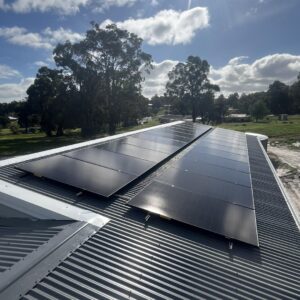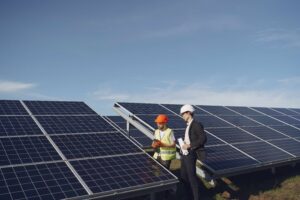Transforming outdoor spaces with feature lighting is one of the most effective ways to elevate the appearance, safety, and energy efficiency of a property. In Southwest WA, where homeowners experience wet winters, hot summers, and occasional strong winds, choosing the right outdoor lighting is essential. Feature lighting provides more than just illumination, it highlights architectural elements, garden features, and pathways, creating a visually appealing environment while reducing energy use.
By incorporating energy-efficient technologies like LEDs, solar panels, and smart controls, homeowners can achieve a sophisticated, sustainable outdoor design. Well-planned feature lighting can transform gardens, patios, and pathways into inviting spaces that are functional and environmentally friendly. Whether accentuating a water feature, framing a tree, or illuminating steps, outdoor lighting can enhance both the beauty and safety of a property. Using feature lighting WA allows residents to blend aesthetic appeal with energy-conscious solutions, making outdoor areas enjoyable year-round.
One of the main advantages of energy-efficient feature lighting is that it provides long-term operational benefits while maintaining strong visual impact. LEDs, for example, deliver high-quality light with minimal power use, while solar outdoor lighting WA harnesses renewable energy for illumination after sunset. Layered lighting techniques, combining ambient, task, and accent lighting, can highlight specific areas while maintaining overall balance. For homeowners considering renewable integration, solutions such as battery storage systems can complement solar setups, ensuring lighting continues reliably even during cloudy days or outages.
What is Feature Lighting and Why it Matters
Feature lighting WA refers to the intentional illumination of specific elements of a landscape or property, rather than general or functional lighting. Its primary aim is to enhance visual interest and create atmosphere while improving safety and accessibility.
Key Benefits of Feature Lighting:
| Benefit | Description |
|---|---|
| Enhanced Aesthetic | Highlights architectural or natural features in gardens and outdoor areas |
| Safety & Security | Illuminates pathways, steps, and entrances to reduce risk of accidents |
| Energy Efficiency | Uses low-energy technologies like LEDs and solar for sustainable lighting |
| Flexibility | Can be integrated with timers, smart systems, and motion sensors |
| Environmental Responsibility | Reduces reliance on grid power, supporting eco-friendly solutions |
Feature lighting allows homeowners to focus attention on key features such as trees, sculptures, seating areas, or water elements. Using directional lighting such as spotlights or uplights creates contrast and depth, transforming the look of an outdoor area after dark. By pairing feature lighting with smart controls, it is possible to adjust brightness, set schedules, and respond to environmental changes, maximising both visual effect and energy efficiency.
Homeowners interested in solar-powered systems can further reduce reliance on grid electricity by incorporating solar outdoor lighting. These lights store solar energy during the day and release it at night, providing reliable illumination with minimal environmental impact. For consistent performance even in cloudy or low-sunlight conditions, integrating battery storage solutions ensures uninterrupted operation.
Pairing Feature Lighting with Solar Power
Integrating feature lighting with solar power is one of the most effective ways to reduce energy bills and environmental impact in Southwest WA. With high solar exposure in summer and mild conditions in spring and autumn, homeowners can generate a significant portion of their outdoor lighting needs directly from the sun.
Solar panels can be installed on suitable roof space or sheds and connected to the home’s electrical system. Outdoor feature lighting, particularly LED fixtures, can then be powered by this solar-generated electricity, dramatically lowering reliance on grid power. When designed correctly, most everyday outdoor lighting loads (path lights, garden uplights, wall lights, and security sensors) can be offset by a modest solar array.
Key advantages of pairing feature lighting with solar power:
- Lower power bills: Solar generation offsets the daytime usage of the home and can significantly reduce the cost of running lights at night.
- Improved sustainability: Using solar energy reduces greenhouse gas emissions and reliance on fossil-fuel-based grid power.
- Future-proofing: As energy prices rise, a solar-powered lighting setup helps stabilise running costs over the long term.
For homeowners planning a broader solar upgrade, it is worth including outdoor lighting in the overall energy design. Selecting efficient LED fixtures, minimising unnecessary overnight run times, and using smart controls ensures that solar energy is used where it makes the biggest impact.
Battery Storage and Off‑Grid Lighting Solutions
To maximise the benefits of solar and ensure reliable outdoor lighting year-round, battery storage and off‑grid solutions are increasingly popular across Southwest WA.
Battery Storage for Grid‑Connected Homes
Battery storage systems store excess solar energy produced during the day and make it available at night, exactly when outdoor lighting is most often used. Instead of exporting surplus energy back to the grid at low feed‑in tariffs, a battery allows homeowners to use their own clean energy later.
Benefits of combining feature lighting with battery storage include:
- Reliable night-time lighting: Even on cloudy days or during periods of high evening demand, battery systems can supply power to outdoor lighting without drawing from the grid.
- Backup during outages: In the event of a power outage, batteries (with appropriate backup configuration) can keep critical lights, such as pathways, entrances, and security lighting, operational for safety and visibility.
- Better use of WA battery rebates: In Western Australia, available battery incentives can help make a combined solar‑plus‑storage system more affordable, improving the payback of both indoor and outdoor energy use.
When planning a battery system, it’s useful to list outdoor lighting loads – including feature lights, garden lighting, and security lights – so they can be prioritised in backup settings if the system supports partial‑home backup.
Off‑Grid and Hybrid Lighting Options
For rural properties, holiday homes, or areas with limited grid access, off‑grid or hybrid setups can be highly effective:
- Fully off‑grid solar lighting: Stand‑alone solar lighting systems with dedicated panels and batteries can power driveway lights, gate lights, and garden features without any connection to the main switchboard.
- Hybrid systems: A mix of grid‑connected and stand‑alone solar lights can provide redundancy. For example, key safety lights at entrances may be powered from the main solar‑plus‑battery system, while remote gate or paddock lighting uses self‑contained solar fixtures.
These solutions reduce the need for trenching and cabling over long distances, lowering installation costs and environmental disturbance while providing reliable, low‑impact illumination.
Popular Energy-Efficient Outdoor Lighting Options
When designing outdoor feature lighting, several energy-efficient options are available:
1. LED Lighting
LEDs are highly energy-efficient and versatile, producing bright illumination with minimal energy consumption. They are suitable for a wide range of applications, from pathway lights to garden spotlights. Modern LED lighting is also available in adjustable colour temperatures, allowing homeowners to create warm, inviting spaces. LEDs are long-lasting, often exceeding 25,000 hours, which reduces maintenance frequency while maintaining consistent lighting quality.
2. Solar Outdoor Lighting
Solar lights are ideal for areas where connecting to mains electricity is difficult. They are self-contained, drawing energy from the sun and storing it in built-in batteries for use after dark. Contemporary solar lighting often incorporates features such as motion detection, timers, and dimming, which enhances energy efficiency and functionality. In regions like Southwest WA, solar lighting is highly effective due to ample sunlight during summer months. Homeowners can explore available WA battery rebates to further enhance energy utilisation when combining solar systems with battery storage.
3. Garden Lighting
Well-planned garden lighting adds depth and dimension to landscaping. Low-level pathway lighting, hidden uplights for trees, and spotlighting key garden features can create a layered effect that feels natural and dynamic. Integrating solar or LED technology ensures that garden lighting is both environmentally responsible and visually impactful.
4. Smart-Controlled Lighting
Smart lighting systems allow homeowners to adjust settings remotely via mobile devices or apps. Features such as dimming, scheduling, and motion detection improve energy efficiency and convenience. Smart lighting can also be programmed to adapt automatically to changes in daylight hours, making it particularly useful in regions with varying seasonal sunlight, like Southwest WA.
By combining these lighting options, homeowners can create a cohesive outdoor environment that is both visually stunning and sustainable.
Design Tips for Feature Lighting in Southwest WA
Effective feature lighting requires a thoughtful approach to both aesthetics and practicality. Here are some strategies:
1. Layer Your Lighting
Layering involves using ambient lighting for general illumination, task lighting for functional areas like pathways, and accent lighting to highlight focal points. This creates depth and ensures that all areas are both safe and visually engaging.
2. Consider Local Climate
Southwest WA experiences wet winters, occasional strong winds, and hot summer periods. Choosing weather-resistant lighting fixtures rated IP65 or higher ensures durability and reliability. Solar panels should be positioned to maximise sunlight exposure, while LED fixtures need minimal maintenance.
3. Focus on Focal Points
Identify key elements such as garden beds, seating areas, water features, or trees. Using directional lighting such as spotlights or uplights enhances these areas without over-illuminating the space.
4. Select Appropriate Colour Temperatures
Warm white lighting (2700K–3000K) creates a welcoming and comfortable atmosphere for outdoor areas. It complements natural garden colours and architectural materials, enhancing both safety and aesthetics.
5.Maintain Simplicity
Avoid overcomplicating the lighting layout. Strategic placement of a few carefully chosen fixtures often produces a stronger effect than numerous scattered lights.
6. Integrate Smart Controls
Timers, dimmers, and app-controlled systems allow flexibility and reduce unnecessary energy usage. They can also create dynamic effects such as gradually dimming lights at specific times or activating lights in response to movement.
Thoughtful design, combined with modern technology, ensures that outdoor spaces are visually appealing, safe, and sustainable.
Installation and Maintenance Tips
Proper installation is key to the effectiveness and safety of feature lighting:
- Use Low-Voltage Systems: Safer and easier to install than high-voltage alternatives, low-voltage lighting is ideal for pathways and garden areas.
- Conceal Wiring: Neatly hide wires along edges or beneath landscaping to maintain a clean appearance.
- Secure Fixtures: Ensure all lights are anchored and weatherproof, able to withstand local wind and rainfall conditions.
- Test Placement: Review lighting angles and brightness levels at night before final installation to ensure optimal effect.
- Regular Maintenance: Clean fixtures, trim overhanging vegetation, and check solar panels or batteries periodically to maintain consistent performance.
Proper installation ensures lighting remains both functional and aesthetically pleasing for years to come. For larger or more complex projects, consulting a professional can provide additional assurance that wiring, placement, and system integration are completed safely and efficiently.
Energy Efficiency and Environmental Impact
Choosing energy-efficient feature lighting significantly reduces energy consumption and supports environmental sustainability. LEDs, solar lights, and smart controls all contribute to reducing reliance on mains electricity. Smart lighting systems can adapt automatically to changing conditions, turning off lights when not needed or dimming them to conserve energy.
By implementing these technologies, homeowners in Southwest WA can enjoy well-lit outdoor spaces that have minimal environmental impact. Using solar energy in combination with battery storage ensures consistent lighting throughout the night without excessive grid reliance. This approach demonstrates a commitment to sustainable living while enhancing the beauty and safety of outdoor areas.
Conclusion
Feature lighting transforms outdoor spaces in Southwest WA into visually striking, functional, and sustainable environments. By combining LED, solar, garden, and smart-controlled lighting, homeowners can create outdoor areas that are safe, welcoming, and environmentally responsible. Thoughtful design, proper installation, and energy-efficient technologies allow for flexible, dynamic lighting solutions that enhance both beauty and utility.
Planning with local climate considerations in mind ensures that lighting systems remain reliable, long-lasting, and visually appealing throughout the year. Integrating renewable energy systems and smart controls further increases efficiency while reducing environmental impact. Homeowners interested in learning more about sustainable outdoor energy solutions can visit MaxSolar’s for detailed information.
Energy-efficient feature lighting is not only practical but also contributes significantly to the overall character of a home. Well-designed lighting enhances landscaping, highlights architectural details, and creates inviting spaces for relaxation, entertainment, and safety after dark.
Frequently Asked Questions
What is feature lighting, and how does it differ from regular outdoor lighting?
Feature lighting highlights specific elements of your property, such as trees, sculptures, or garden beds, while regular lighting focuses on overall illumination.
Is LED lighting better than traditional halogen for outdoor use?
Yes. LEDs use less energy, last longer, produce less heat, and are available in multiple designs suited for outdoor feature lighting.
Can solar outdoor lighting work in Southwest WA’s climate?
Absolutely. Modern solar lighting systems perform well even with variable sunlight, and battery storage options ensure continuous operation.
How can I make my outdoor lighting more energy-efficient?
Using LEDs, solar-powered fixtures, and smart controls significantly reduces energy use while maintaining visual appeal.
Do I need professional installation for outdoor feature lighting?
Professional installation ensures safe wiring, optimal positioning, and effective integration, particularly for larger or complex lighting projects.
Will adding outdoor feature lighting increase my power bill?
If you use older halogen or incandescent fittings and run them for long periods, they can noticeably increase your bill. However, by choosing efficient LED fixtures and pairing them with solar power, smart controls, and, where suitable, battery storage, the overall impact on your energy costs can be minimal. In many cases, solar‑powered systems can offset most or all of the added consumption.
Do I need a battery to benefit from solar‑powered lighting?
No. Grid‑connected solar systems still reduce your energy bills and environmental impact, even without a battery. However, a battery allows you to store excess solar energy for use at night when outdoor lighting is typically required. This can further increase savings and provide lighting resilience during power outages.
Are solar garden lights enough, or should I connect my lighting to a full solar system?
Standalone solar garden lights are a simple, low‑cost solution for smaller areas like pathways, small garden beds, or decorative features. For larger properties, higher light levels, or more complex designs, integrating outdoor lighting into a full solar‑plus‑battery system often delivers better performance, reliability, and control. Many homeowners use a mix of both approaches.
How does feature lighting help the environment?
Feature lighting supports environmental responsibility when it is designed with efficiency and renewable energy in mind. Using LEDs, solar power, and smart controls reduces overall electricity demand, lowers greenhouse gas emissions, and limits light pollution by directing light where it is needed. When powered by solar and supported by battery storage, outdoor lighting can operate with minimal reliance on fossil‑fuel‑based grid electricity.
What should I discuss with an installer if I want solar‑powered feature lighting?
When speaking with MaxSolar or electrical installer, it helps to cover:
1. How many outdoor lights you plan to install and how often they’ll be used.
2.Whether you want critical outdoor areas (paths, entrances, security lights) to stay on during outages.
3.Options for integrating lighting controls, such as sensors and smart timers, into your solar and battery system.
4.Available WA battery rebates or incentives that may improve the payback of combining solar, storage, and outdoor feature lighting.







